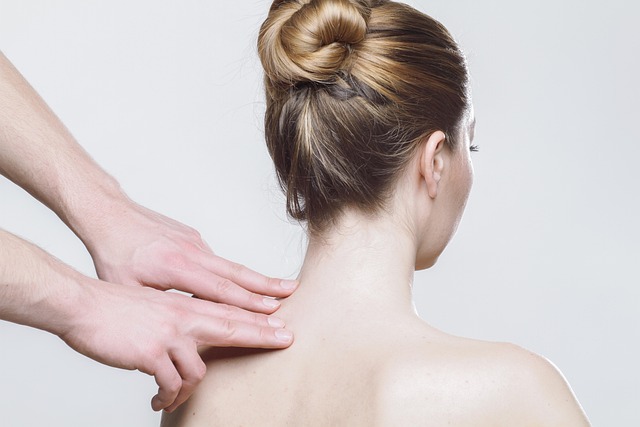Platelet-rich plasma (PRP), derived from a patient's own blood, is a revolutionary therapy in sports medicine that accelerates joint regeneration by stimulating natural repair mechanisms. Combined with physical therapy, PRP treatments enhance tissue repair, collagen production, and articular cartilage rebuilding, leading to improved function, reduced inflammation, and faster recovery times for conditions like tendonitis, ligament sprains, arthritis, and other musculoskeletal disorders. This innovative approach offers a promising game-changer in sports medicine and orthopedics, providing optimal joint regeneration with PRP.
“Unleash your body’s healing power with the innovative combination of Platelet-Rich Plasma (PRP) and physical therapy. This powerful duo revolutionizes joint regeneration, offering a holistic approach to managing pain and restoring mobility.
PRP, rich in growth factors, accelerates natural healing processes, while physical therapy provides a comprehensive framework for recovery. Together, they target the root causes of joint issues, fostering significant improvements. From athletes to individuals battling chronic conditions, real-world success stories highlight the transformative potential of PRP in joint regeneration.”
Understanding PRP and its Role in Joint Regeneration
Platelet-rich plasma (PRP) is a cutting-edge therapy that has gained significant attention in the field of sports medicine and joint health. It involves the use of a patient’s own blood, enriched with a high concentration of platelets, which are known for their role in healing and regeneration. PRP contains a rich array of growth factors and proteins that stimulate the body’s natural repair mechanisms, making it a powerful tool for promoting joint regeneration.
When combined with physical therapy, PRP treatments offer a comprehensive approach to managing joint pain and injuries. The growth factors in PRP accelerate tissue repair, enhance collagen production, and support the rebuilding of damaged articular cartilage. This process is particularly beneficial for athletes or individuals suffering from conditions like arthritis, where joint degeneration is a concern. By harnessing the body’s inherent healing abilities, PRP combined with physical therapy can lead to improved joint function, reduced inflammation, and faster recovery times.
Physical Therapy: A Comprehensive Approach to Healing
Physical therapy is a comprehensive and holistic approach to healing that focuses on improving movement, restoring function, and enhancing overall well-being. It involves a range of techniques tailored to individual needs, including manual therapy, exercises, and education. Physical therapists are experts in assessing and diagnosing musculoskeletal disorders, injuries, or conditions affecting the body’s joints, muscles, and nerves. They design personalized treatment plans to promote natural healing and optimize performance.
One innovative method that has gained significant attention in joint regeneration with PRP (Platelet-Rich Plasma) therapy. PRP harnesses the body’s inherent healing mechanisms by utilizing a patient’s own blood to accelerate tissue repair. When combined with physical therapy, this approach offers a powerful synergy. Physical therapists can guide patients through specific exercises and movements targeted at damaged joints, while PRP treatments stimulate cellular regeneration and promote tissue growth. This integrated method has shown promising results in treating conditions like tendonitis, ligament sprains, and cartilage damage, ultimately leading to faster recovery times and improved long-term joint health.
Combining PRP and PT for Optimal Results
Combining Platelet-Rich Plasma (PRP) with physical therapy offers a powerful approach to achieving optimal results in joint regeneration. PRP, derived from a patient’s own blood, is rich in growth factors that promote healing and tissue repair. When integrated into a structured physical therapy program, this innovative treatment enhances the body’s natural ability to heal damaged joints, ligaments, and tendons.
This dual-pronged approach leverages the regenerative properties of PRP alongside evidence-based exercises and techniques employed by physical therapists. The result is accelerated recovery, improved mobility, and enhanced joint function. By stimulating the body’s inherent healing mechanisms, combining PRP with PT can offer significant advantages over traditional treatments alone, making it a promising game-changer in sports medicine and orthopedics for optimal joint regeneration.
Real-World Success Stories: Transforming Lives Through Joint Regeneration
In the realm of healthcare, there are countless stories of individuals finding relief and recovery through innovative treatments. One such success narrative revolves around the transformative power of combining Platelet-Rich Plasma (PRP) with physical therapy for joint regeneration. PRP, a natural substance derived from the patient’s own blood, has gained significant attention for its potential to accelerate healing and repair damaged tissues. When coupled with physical therapy, it becomes a powerful duo in the quest for joint health and mobility.
Real-world applications have showcased remarkable results, especially for athletes and individuals grappling with chronic joint pain. For instance, many professional athletes have attested to the effectiveness of PRP injections combined with targeted exercises in restoring their range of motion and reducing inflammation. These success stories extend beyond the athletic realm, as everyday people have found solace in this treatment approach for conditions like arthritis, tendinitis, and ligament sprains. Through joint regeneration with PRP, individuals can experience reduced pain, improved function, and a higher quality of life.
The integration of Platelet-Rich Plasma (PRP) with physical therapy offers a promising path toward effective joint regeneration. By harnessing the body’s natural healing mechanisms, this dual approach not only accelerates recovery but also provides lasting solutions for those seeking relief from joint pain and dysfunction. Real-world success stories underscore the transformative potential of PRP in conjunction with PT, paving the way for improved mobility, reduced inflammation, and enhanced quality of life for individuals suffering from joint-related conditions. As research continues to evolve, the future looks bright for further advancements in this innovative treatment modality, offering hope and healing to those who rely on joint regeneration with PRP.
